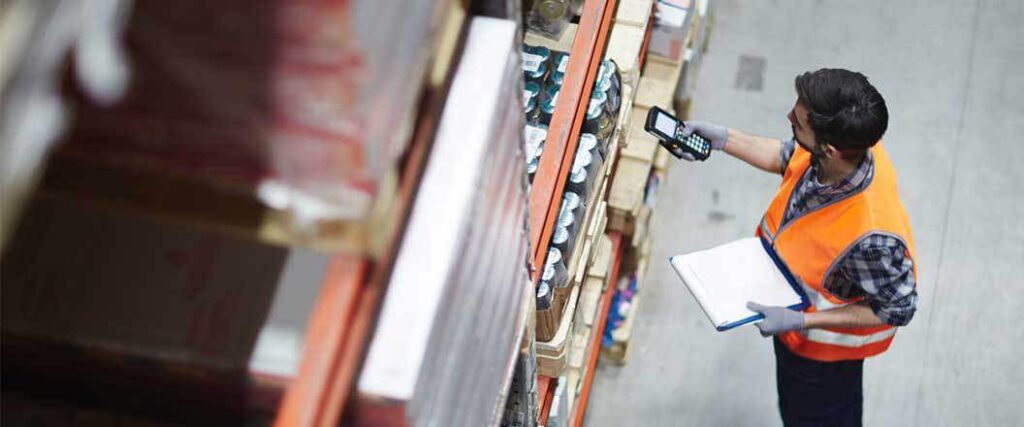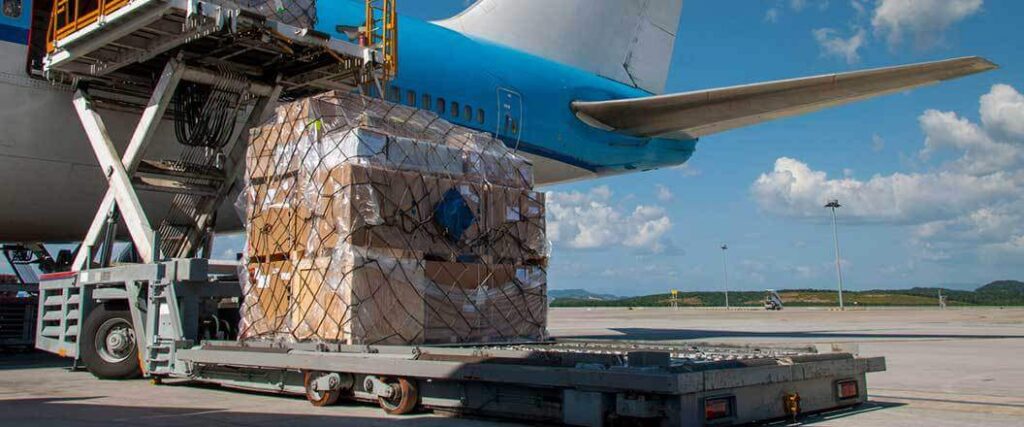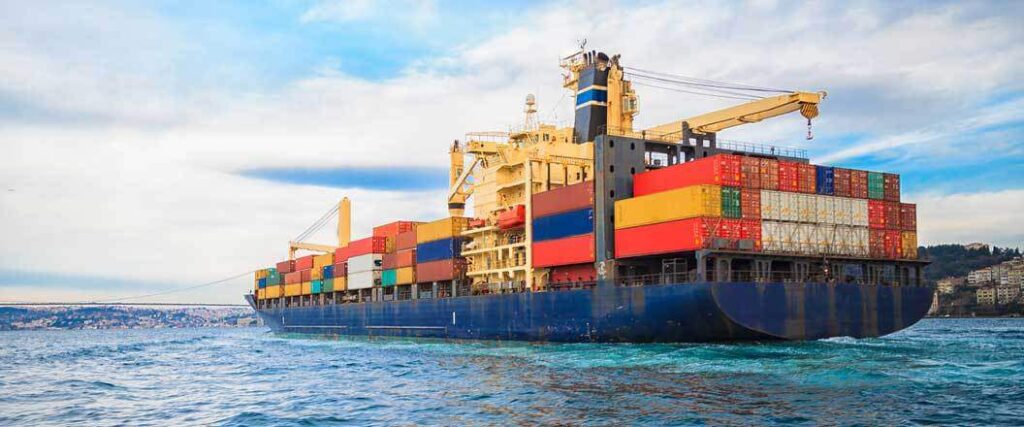An Export Control Classification Number (ECCN) is like a social security number for your goods. ECCNs are an alphanumeric, 5-digit-long code used by the U.S. government to identify the nature of your product and determine its export control regulations.
ECCN numbers are designated by the U.S. Department of Commerce through the Export Administration Regulations, or EAR. Unlike Schedule B numbers used in export tracking, these codes aren’t based on the International Harmonized System (HS). However, they do fall under the general category of product classification codes.
We can break down the basic differences in terms of purpose, usage, and structure.
As an identification code, the ECCN is connected to various details about a product, including whether an exporter needs to apply for an export license. Other details provide valuable information on how the goods should be transported.
An accurate ECCN is a roadmap for your products as they travel across borders. It provides information that is necessary to international shipping services and exporters alike.
Commercial export shipping is often done in bulk, so even the small mistakes are multiplied across hundreds or even thousands of products. Financially, this can get export carriers and shippers into serious trouble.
Some important details include:
Such details mean that exporters can avoid major legal issues and plan out shipping well ahead of schedule.

Like many government classification systems, there are rules and then there are exceptions to those rules. While Commerce is the overreaching organization that designates ECCN numbers, the Bureau of Industry and Security (BIS) handles most of the groundwork.
We’ll look more into this organization as we discuss the following main points:
A good understanding of this process is essential to getting started in the global exporting business.
BIS is a branch of Commerce and focuses on helping the U.S. by controlling exports in a way that protects strategic technology.
To this end, they keep a Commerce Control List (CCL) where all export codes are cataloged. This list classifies items based on their potential use in applications that could be harmful to the nation.
Other responsibilities of the BIS include:
Exporters involved with any kind of controlled or regulated product should work with professionals familiar with the BIS and their policies. If the possibility of jail time and fines wasn’t enough to convince you, be aware that the BIS can strip you of your export privileges.
In such a case, not only would you be unable to work in exporting directly, you wouldn’t be able to participate in any kind of export transaction. Anyone trying to help you out would face penalties too. In short, the BIS has the ability to shut down your entire operation. You lose money, time, and maybe even your career.
This is another very good reason to know exactly how your products are classified for export.
The BIS has organized exports into 10 categories based on how they might be used in different industries. Each number and letter of an ECCN indicates something different about the item.
The first number of each code indicates which of the 10 categories a product belongs in. Within a category, commodities will fall into one of five product groups. The second character of an ECCN lets you know the specific product group.
| ECCN First Number | Category |
| 0 | Nuclear Materials, Facilities, Equipment, and related items |
| 1 | Materials, Chemicals, Microorganisms, and Toxins |
| 2 | Electronics Design, Development, and Production |
| 3 | Computer Software and Technology |
| 4 | Telecommunications and Information Security |
| 5 | Sensors and Lasers |
| 6 | Navigation and Avionics |
| 7 | Marine |
| 8 | Aerospace and Propulsion |
| 9 | Reserved for Future Use |
As mentioned, the second character, a letter between A and E, will tell you which product group within the category the item belongs to. The product groups are the same for each category.
| Letter | Product Group |
| A | Equipment, Accessories, Attachments, Parts, Components, and Systems |
| B | Test, Inspection and Production Equipment |
| C | Materials |
| D | Software |
| E | Technology |
The last three characters of the ECCN, which are numbers, provide the final details in the classification process.
Essentially, these last three characters in the ECCN are very important in describing and identifying the product and its export control restrictions, making it an essential part of your product's export classification.

Understanding ECCN classifications is the first step you can take to prepare for the export business. If you’re new to exporting, it can also serve as a guide for narrowing down your product options.
This helps with other areas that new exporters might be unfamiliar with.
For those more experienced, the way the ECCN categorizes items might help you identify further opportunities with a field.
Many export controlled items are valuable and exporting them is a serious financial investment. However, these items also represent very real dangers, not just to the U.S., but to wherever they end up going.
There are four major restrictions to consider:
A business that plans to export such items has probably been in the industry for a while, but it never hurts to review. These restrictions are necessary for a safe and ethical global trade environment. A company can’t only focus on getting the products to market; it has to do so responsibly.
ECCN is your compass for navigating the shipping process. It determines what’s legal and if any licensing is needed. Recall that export licenses aren’t universal, even for the same product.
Many regulated items have a country chart attached that tells you where items can or can’t be shipped. This might even include people and businesses. For goods that are delicate or very sophisticated, an ECCN may influence what kind of shipping service you need.
Other parts of the shipping process that are affected include:
Next we’ll take a closer look at how these details impact controlled exports.
Trying to export an item without knowing the ECCN is like trying to mail a letter without an address. It can be packaged and pretty, but it’s not going to go anywhere.
Two things are always going to impact controlled items:
If an exporter doesn’t know they require a license for a product and starts the process anyway, they face thousands in fines. For the BIS, consequences for non-compliance aren’t negotiable. Items that are seen as a risk to national security if exported can even lead to jail time.
Let’s go through a real-world example. Suppose you're exporting an infrared camera that can be used in a variety of applications, from commercial photography to missile guidance systems. Because of the possible military application, it gets an MT flag. This is common with commodities in software or technology fields.
Here are the steps:
When you follow these steps, you’re one step closer to successfully exporting controlled items, including commodities in technology categories.

The CCL categorizes items based on specific factors, but sometimes goods don’t fit neatly into any one category. EAR99 is the designation given to products that don’t fit on a list CCL identifies specifically.
It’s generally seen as a catch-all category for items subject to controls, but with very diverse applications. Most commercial products, including many types of consumer goods, fall under EAR99 and they don’t often require a license to be exported.
Of course, there are times when they do, which is what we’ll consider in the next sections.
All products considered for export need to be checked for an ECCN number. Never assume that a product doesn’t have some kind of control flag.
If the search for your product in the CCL turns up empty, there is a high chance that it will be identified as an EAR99.
Goods that fall under EAR 99 include:
It really comes down to how the commodity can be applied. Exporting winter jackets that are just meant to keep people warm is not likely to be restricted. Exporting winter jackets made with Kevlar that provide protection from bullets might require a license.
Assuming you are just exporting simple winter jackets, you still need to check the destination. There are three situations where even basic products may require licensing or special considerations.
It is possible that you’ll be denied a permit for an EAR99 product. Even something as harmless as a jacket can be used as military wear by nations involved in active conflict, for example. If your destination choices fit any of the three circumstances above, even simple exports are going to get complicated.
EAR99 and ECCNs are both part of the U.S. export control system, but they have different applications and implications.
The EAR99 includes products that fall under Commerce jurisdiction, but don’t fit into a specific ECCN category. As such, they do not have a unique identification number or code.
ECCNs have specific five-character codes to identify them within the CCL under a single category. Having an ECCN doesn’t mean a product is going to require an export license, but it does raise the likelihood.
Despite their differences, both ECCNs and EAR99 highlight the importance of understanding export regulations and the need for compliance.
It’s possible for new exporters to do all the legwork and find their product’s ECCN number on their own. The public can access the CCL through BIS.
However, navigating government regulations and finding an ECCN independently may leave you wondering whether you really have the right one. After all, there are major penalties if the wrong codes are applied to a product.
Get help by working with certified export consultants who specialize in export controls. They can guide you through the classification process and help make sure that you're in compliance with export regulations.
A consultant may even be able to reach out to the BIS on your behalf with an official clarification request. This process might take longer, but you’ll have the official documents from the BIS that state your ECCN code.
Yes, it is possible to export and ship out products that do not have an ECCN.
Most of these are the products that fall under the EAR99 designation. Items classified as EAR99 can be shipped without a specific ECCN, provided they don't fall under any of the previous mentioned exceptions.
In any case, it's crucial to remember that even though you might not need an ECCN for every shipment, understanding the export control regulations and ensuring compliance is mandatory.
Navigating the intricate landscape of export control regulations, especially when it comes to ECCN codes, can be complex and sometimes overwhelming.
Here at Cargo Export USA, we understand the challenges new exporters face. With our experienced team and comprehensive services, we’re here to guide you every step of the way.
As part of our comprehensive suite of services, Cargo Export USA provides:
Give us a call at (866) 301-0635 and let’s explore how Cargo Export USA can simplify your export process and help propel your business to new heights. Get in touch today, and let us help you transform knowledge into growth.